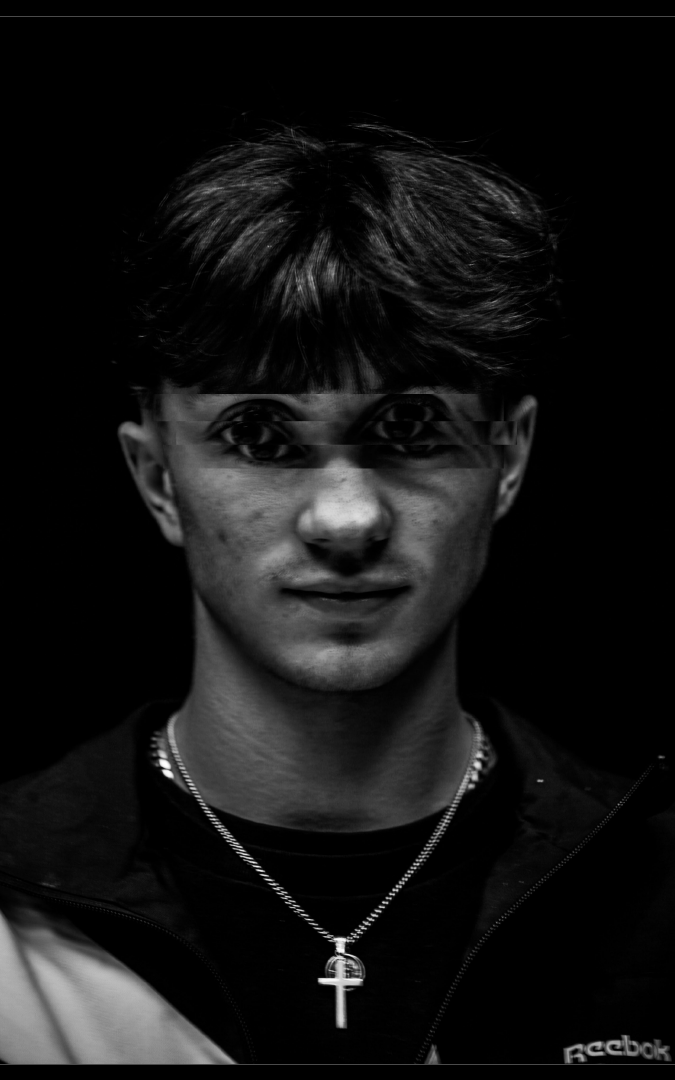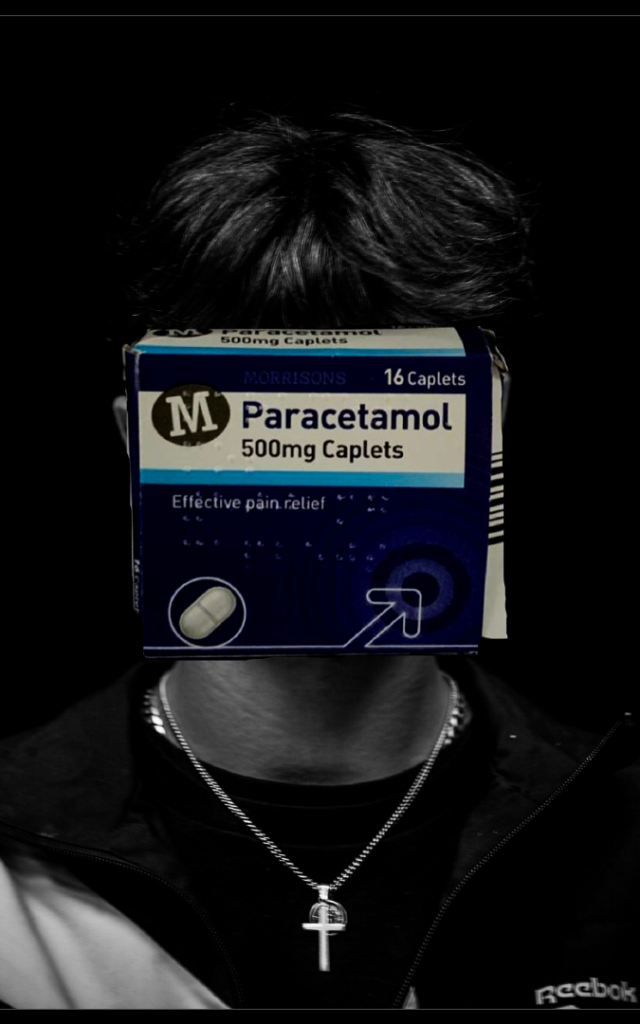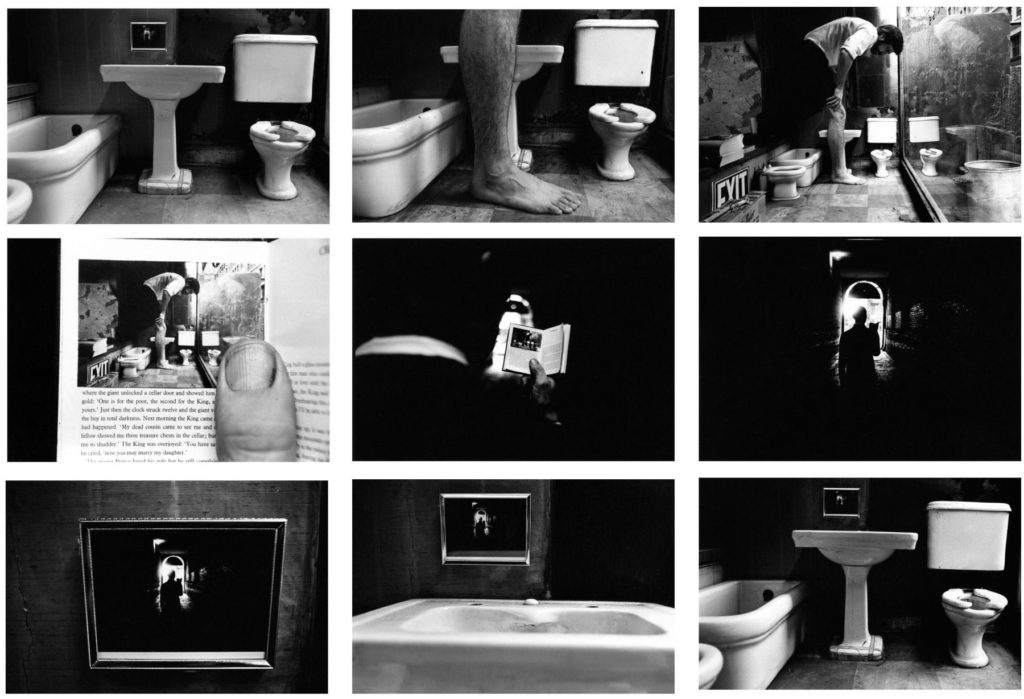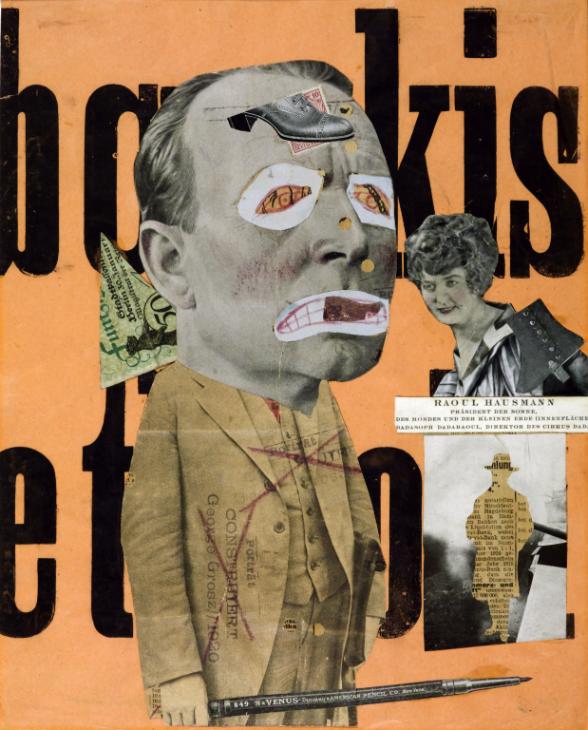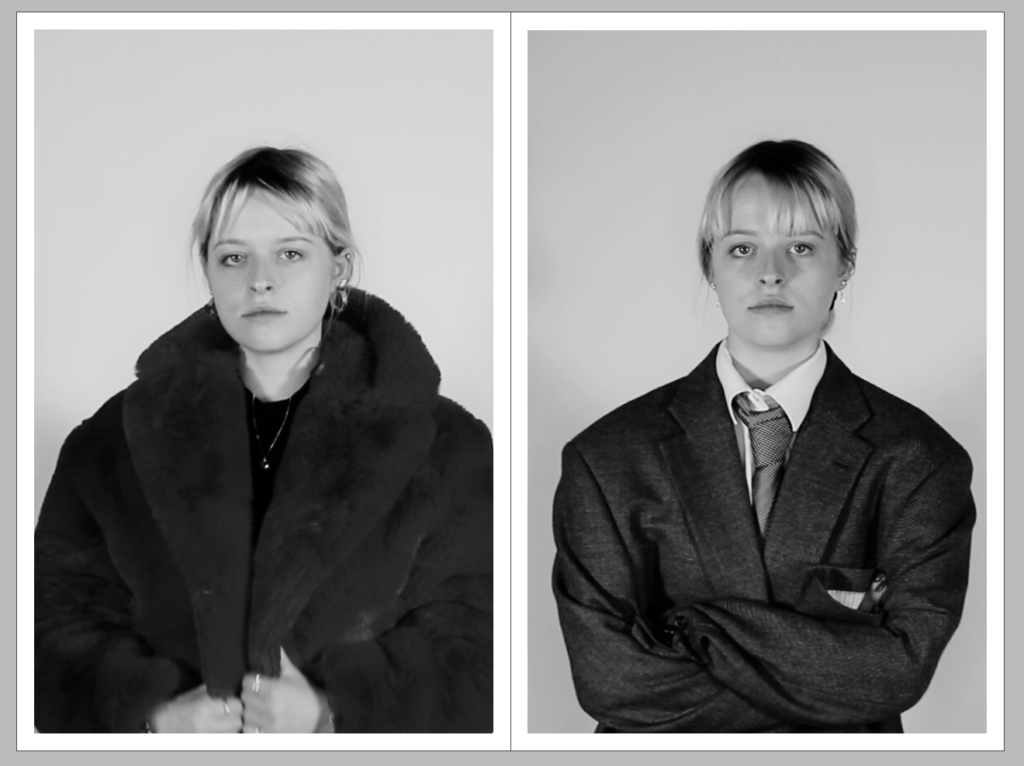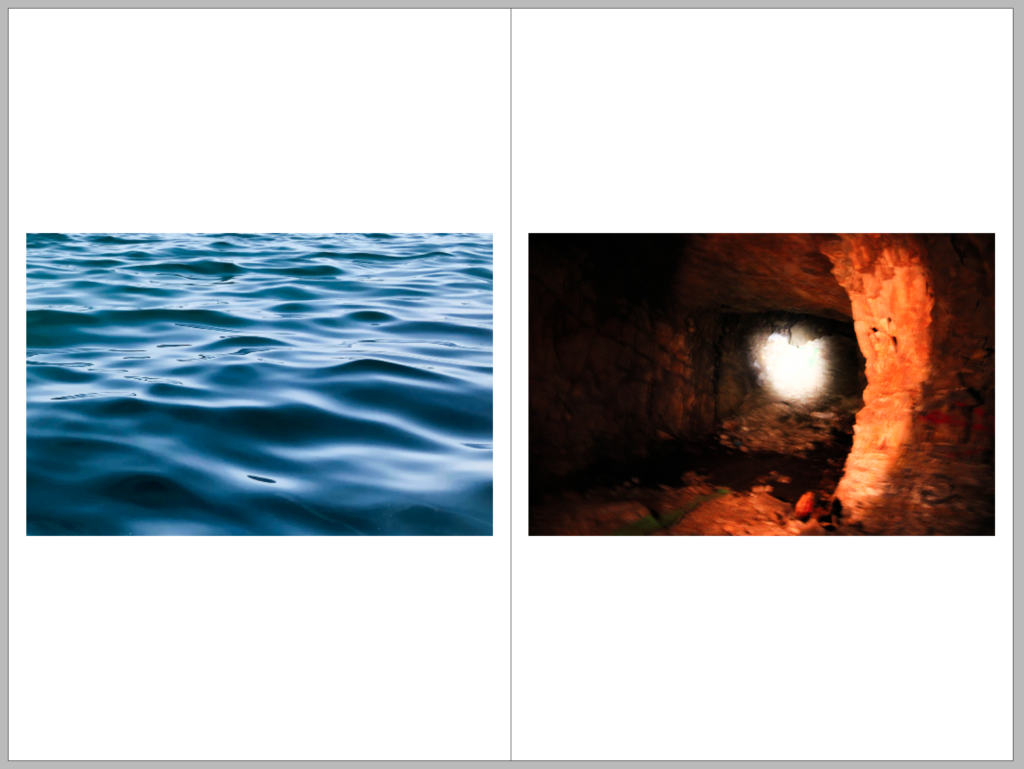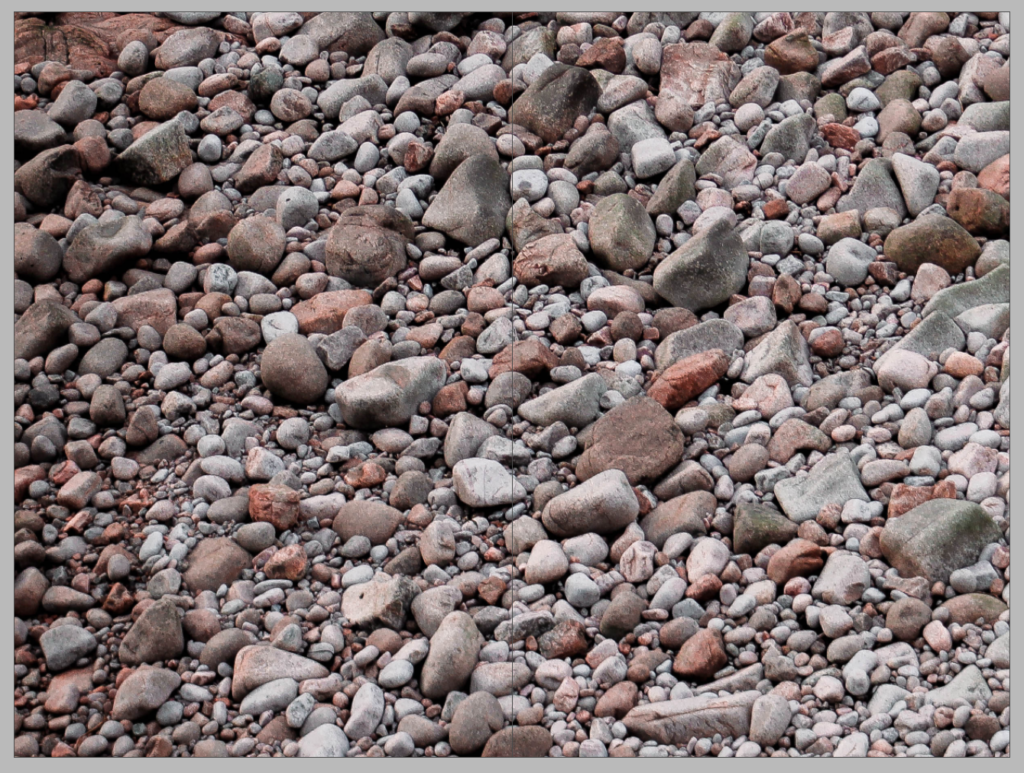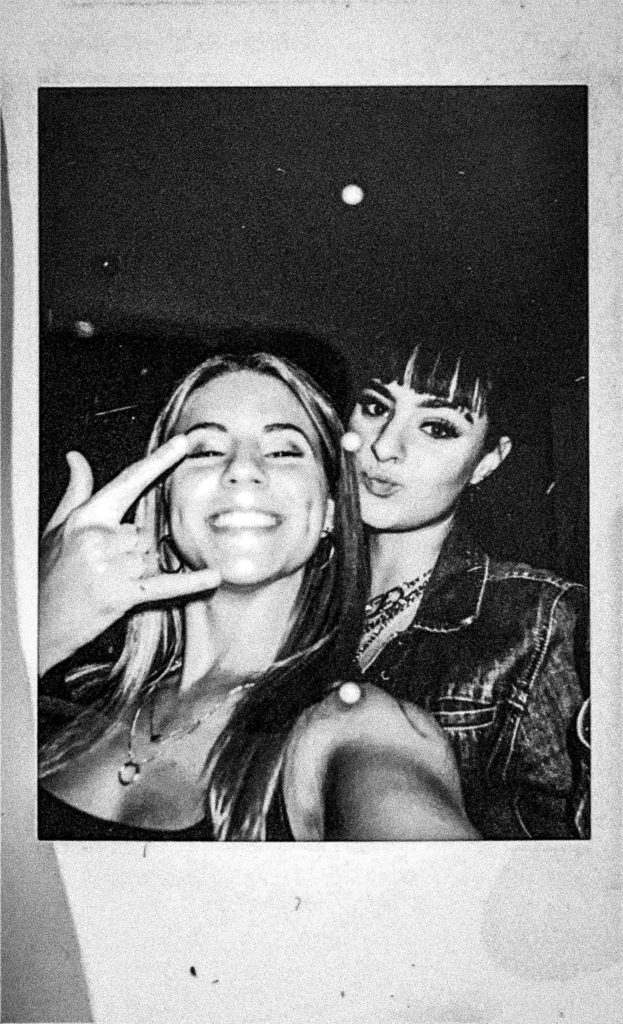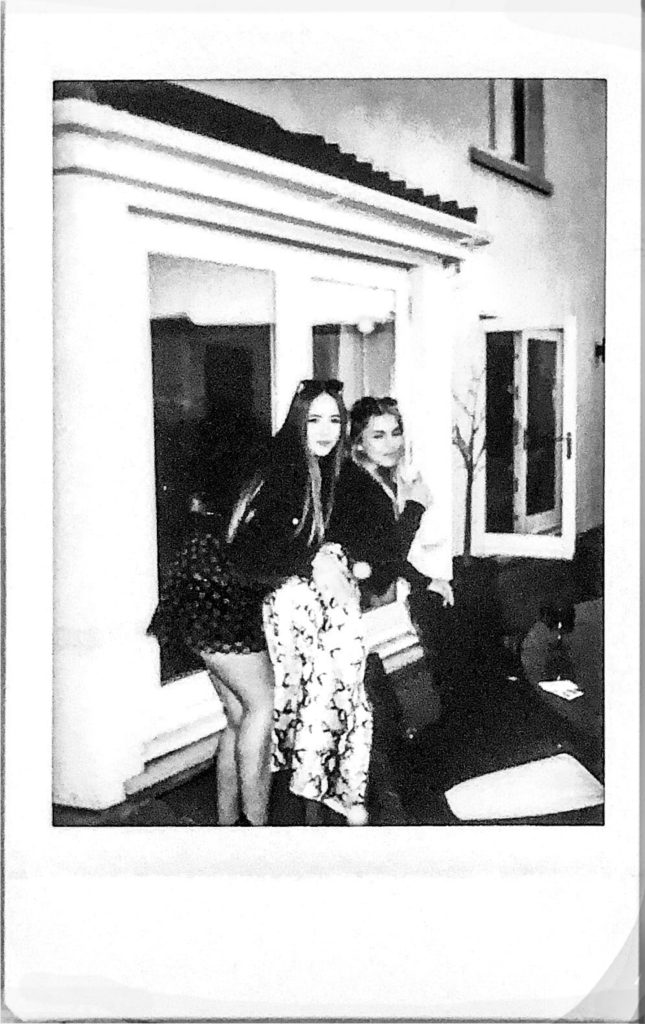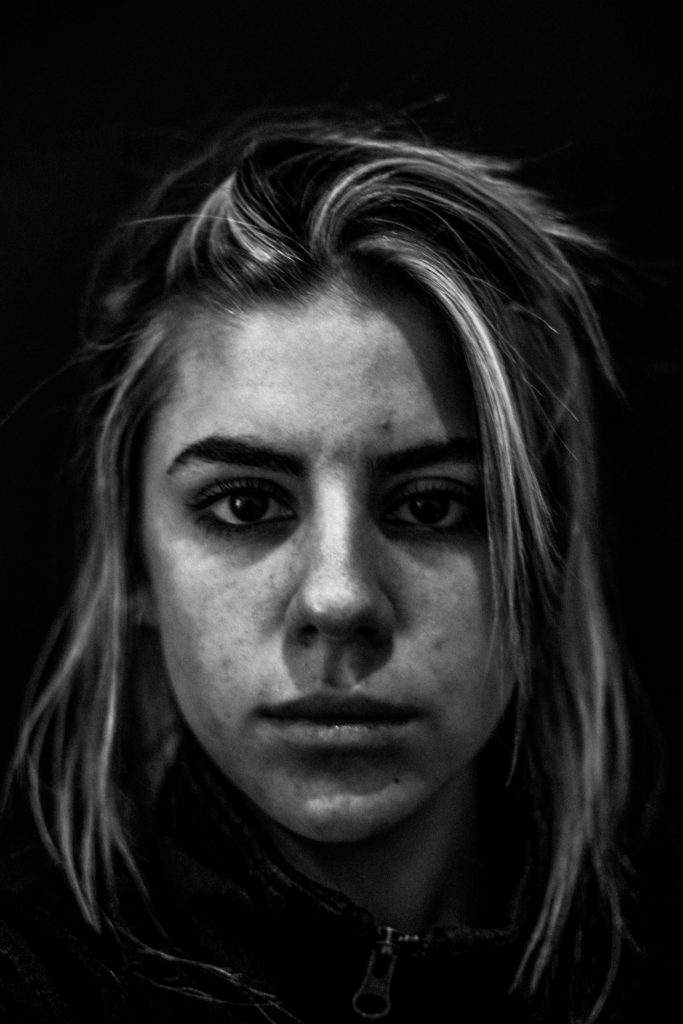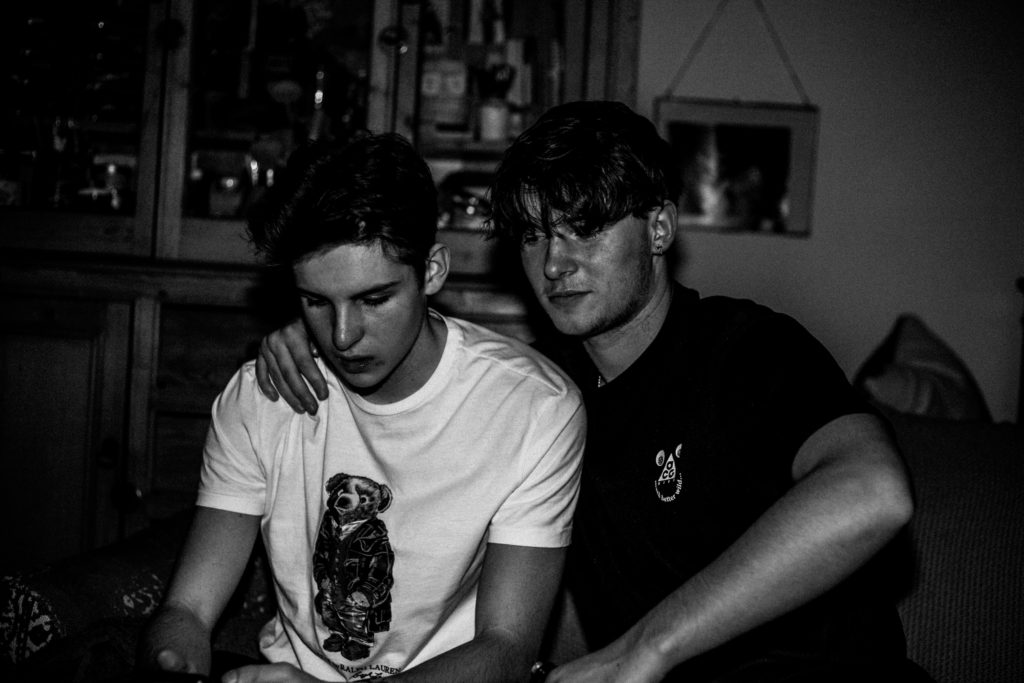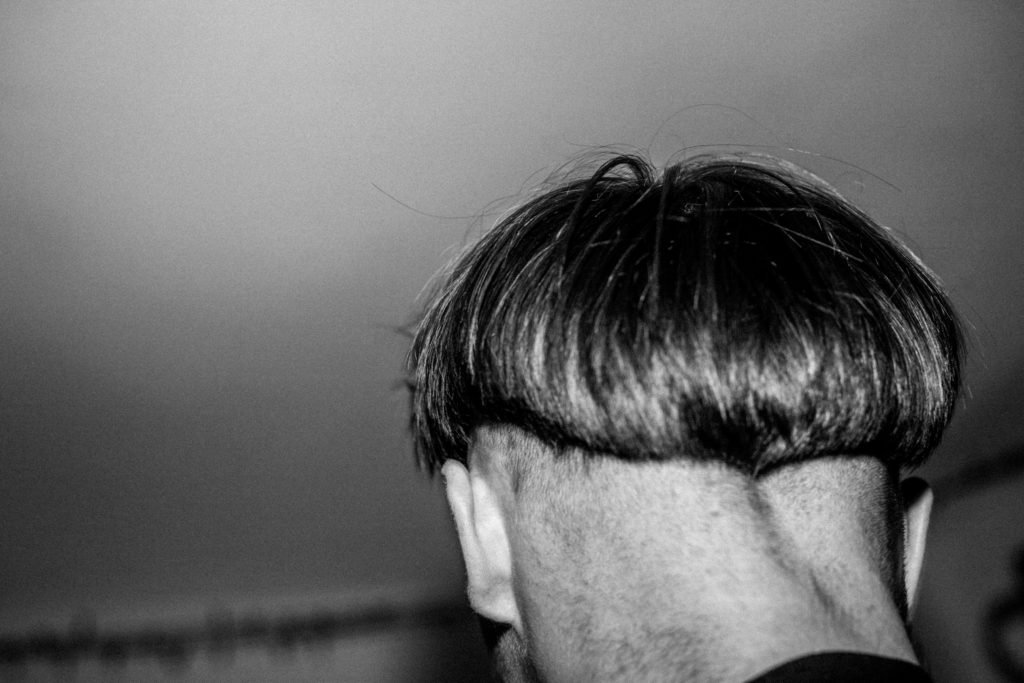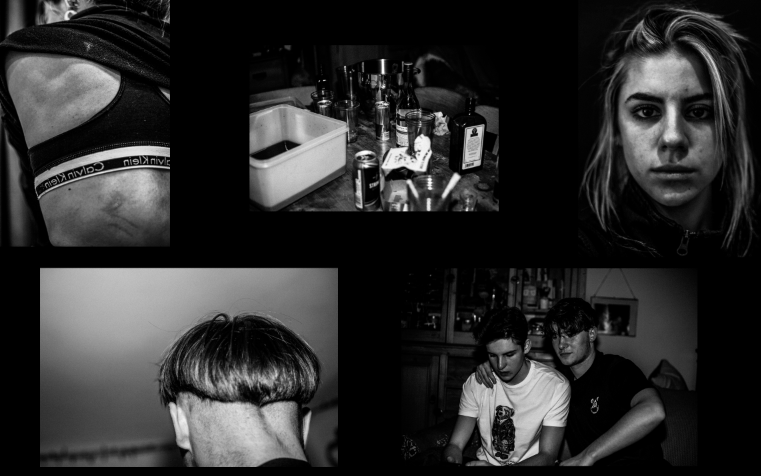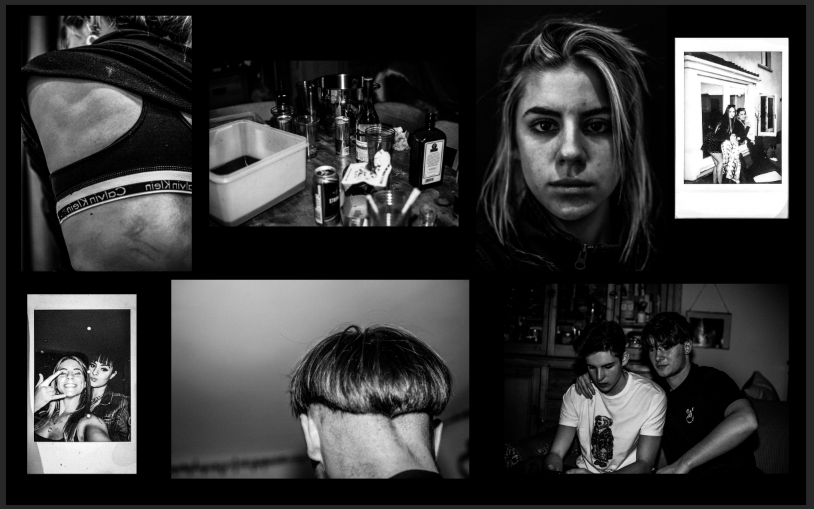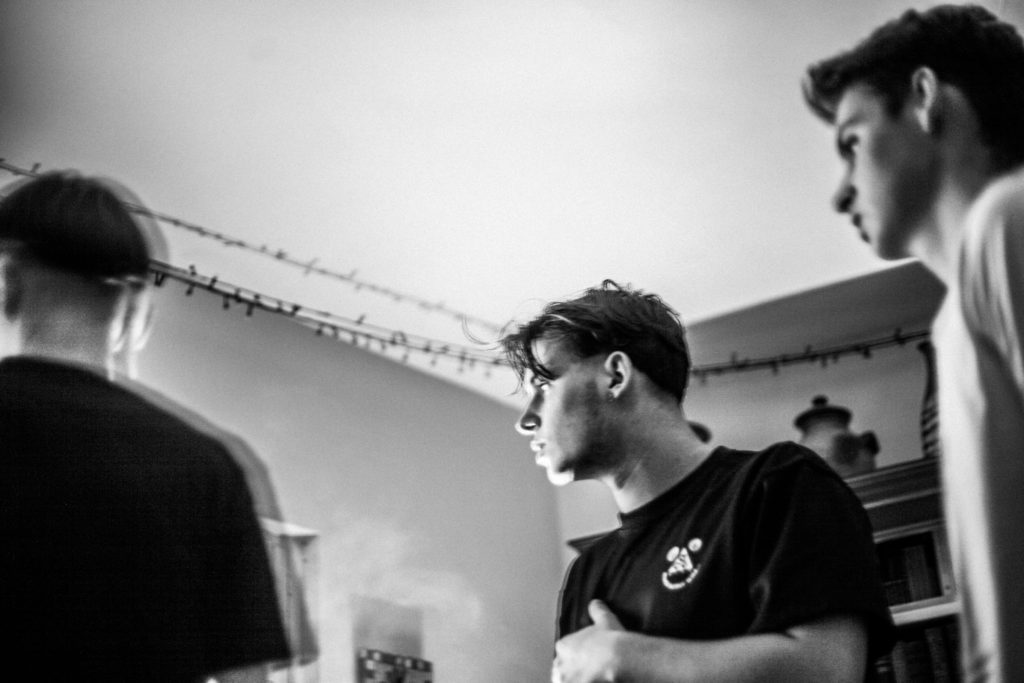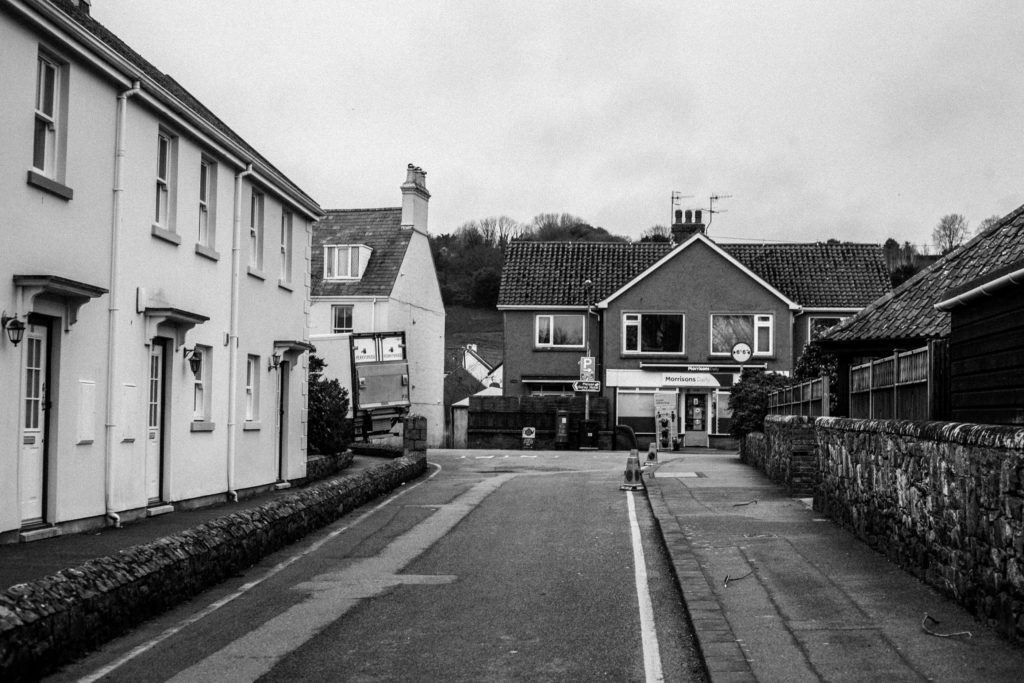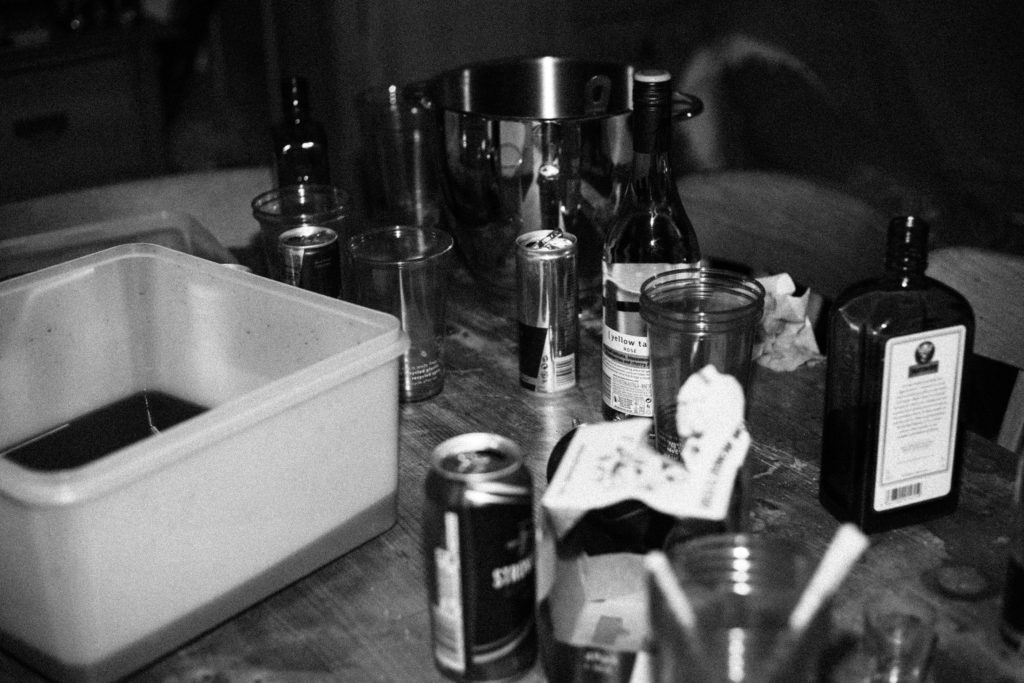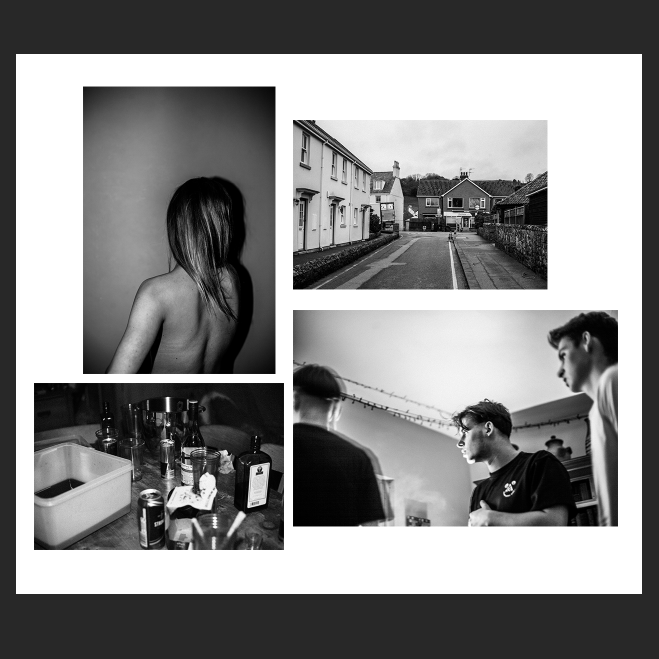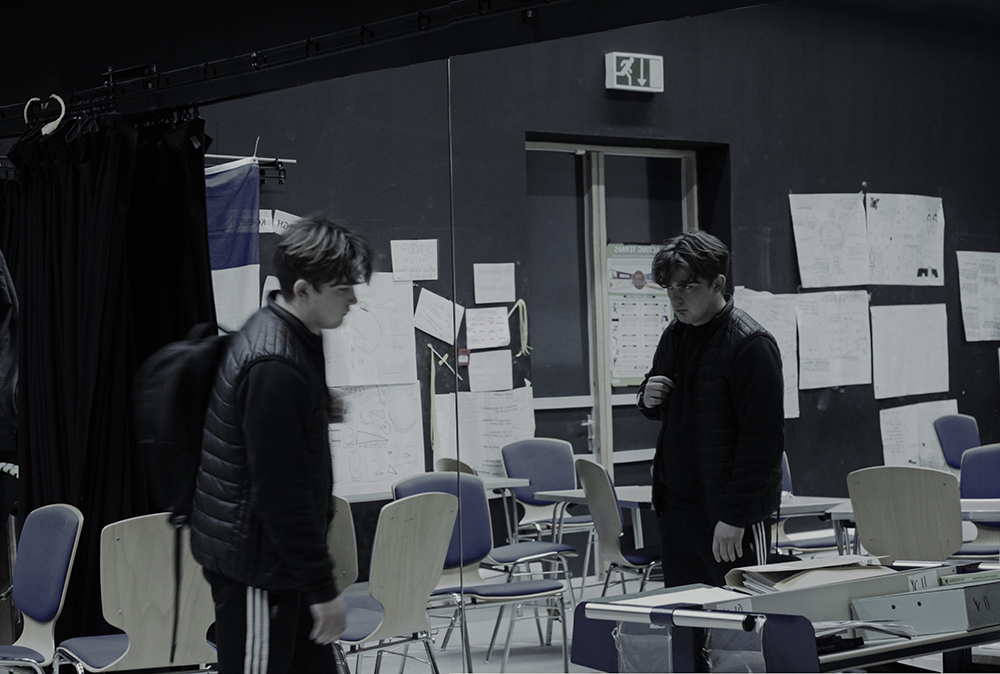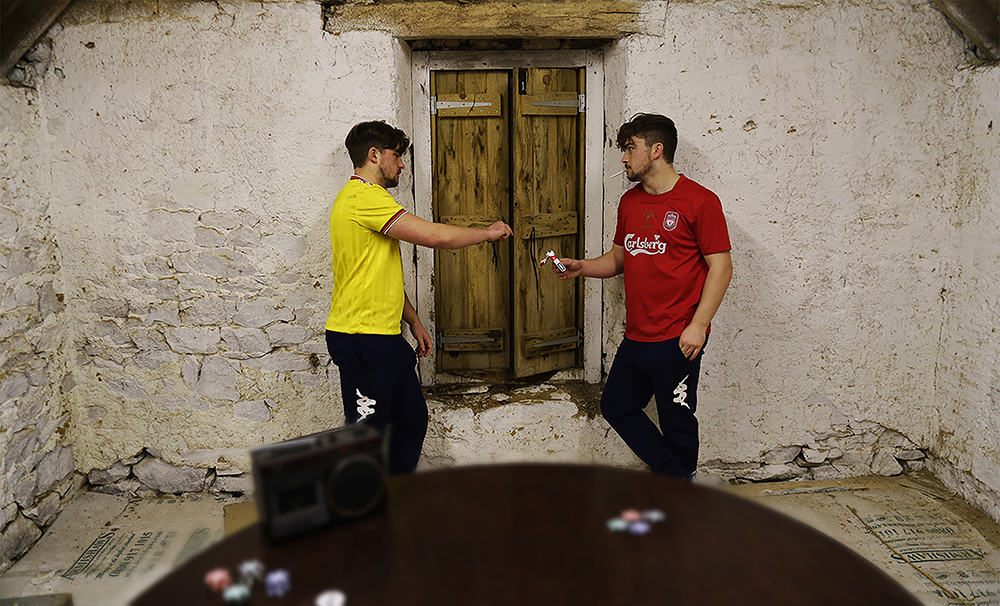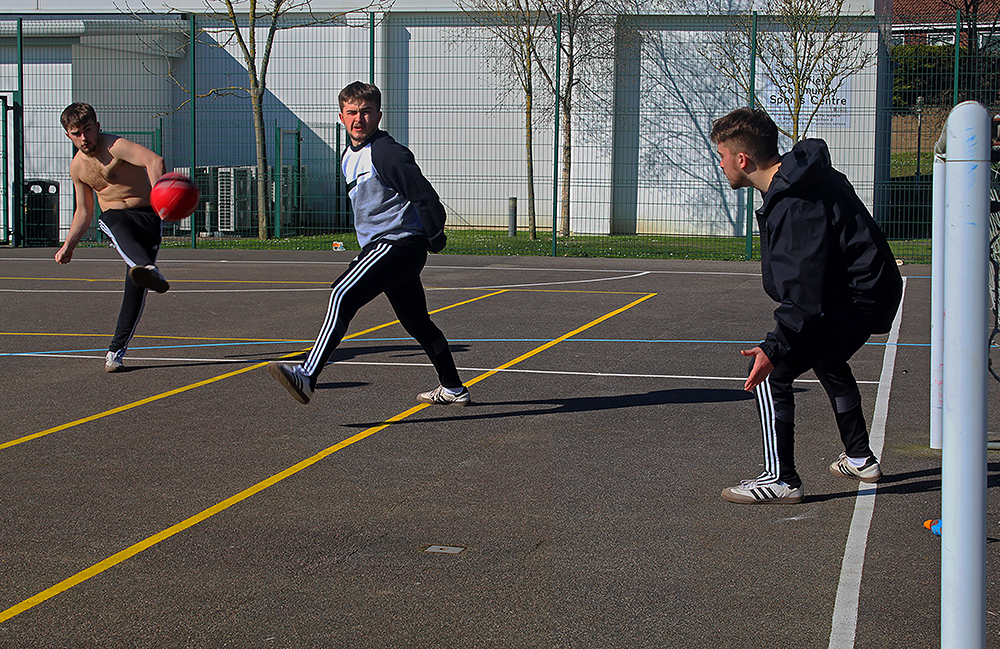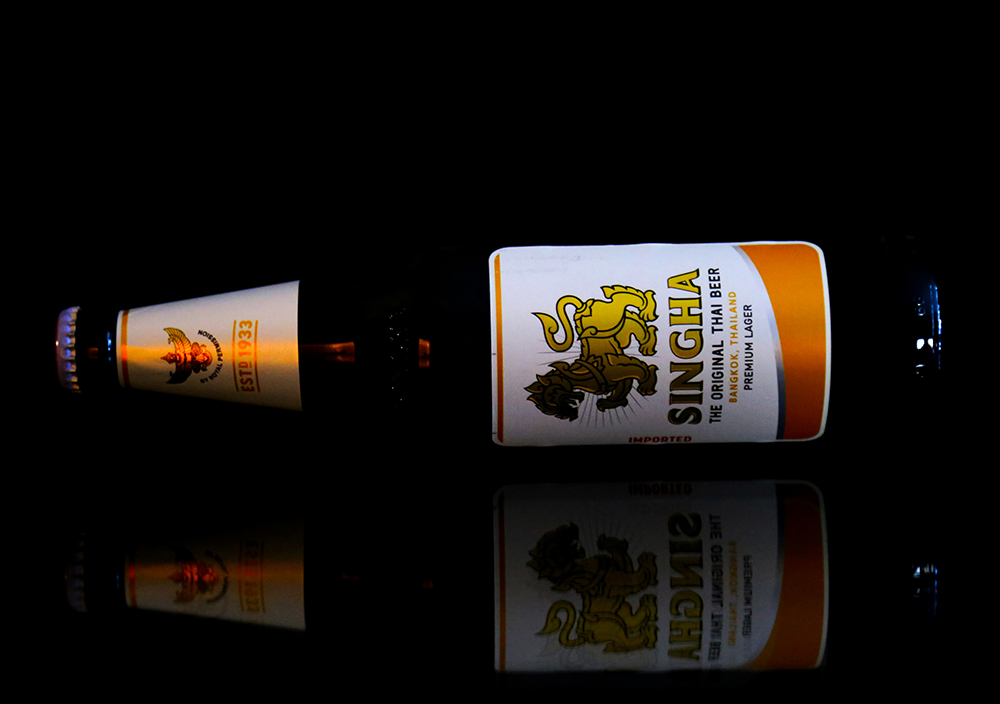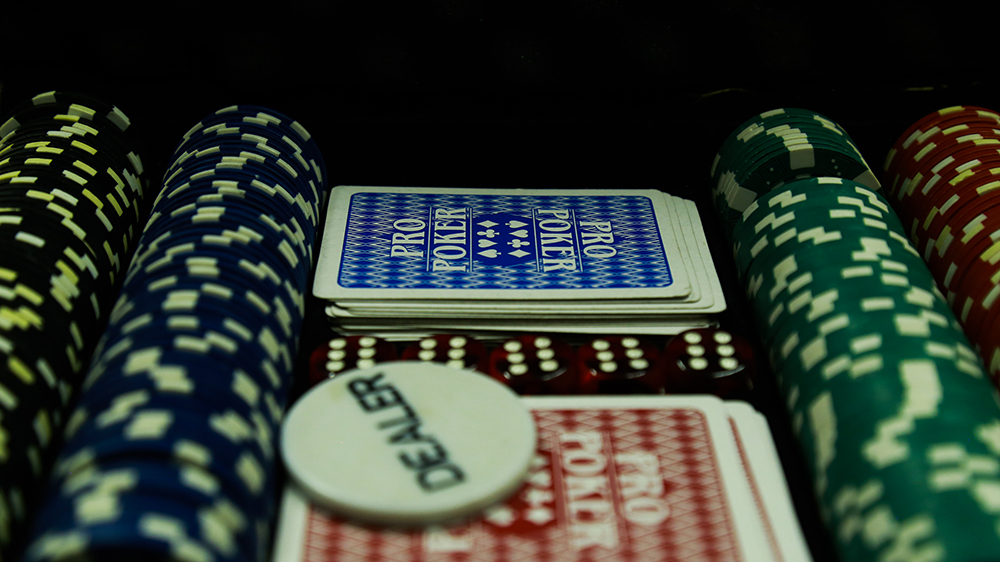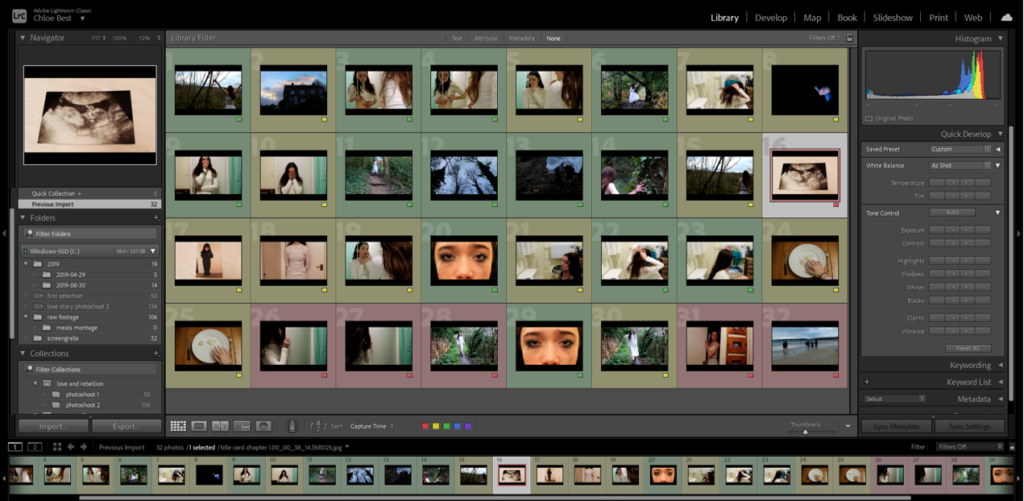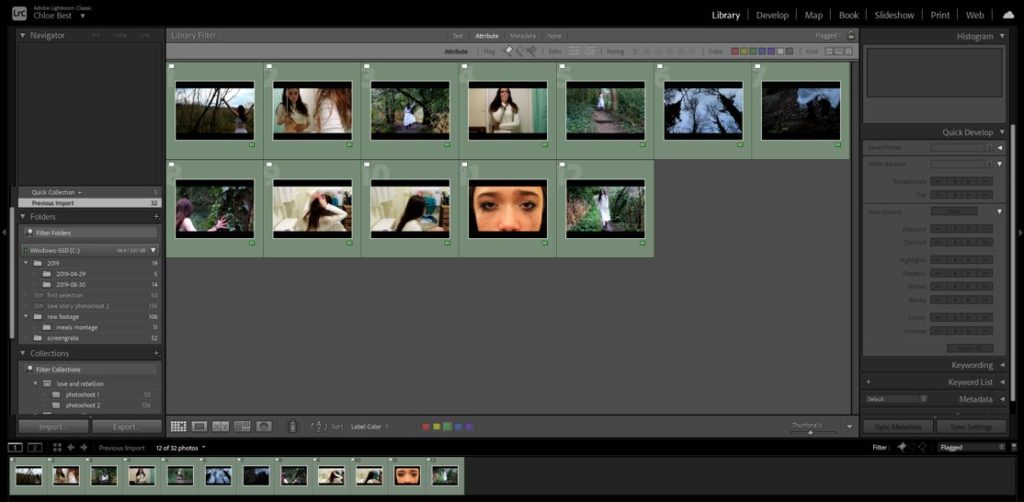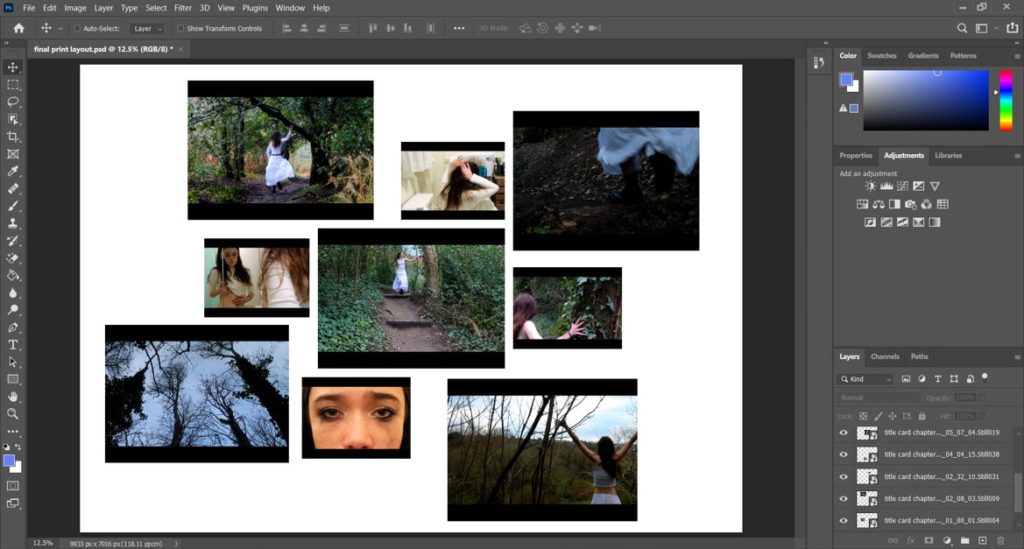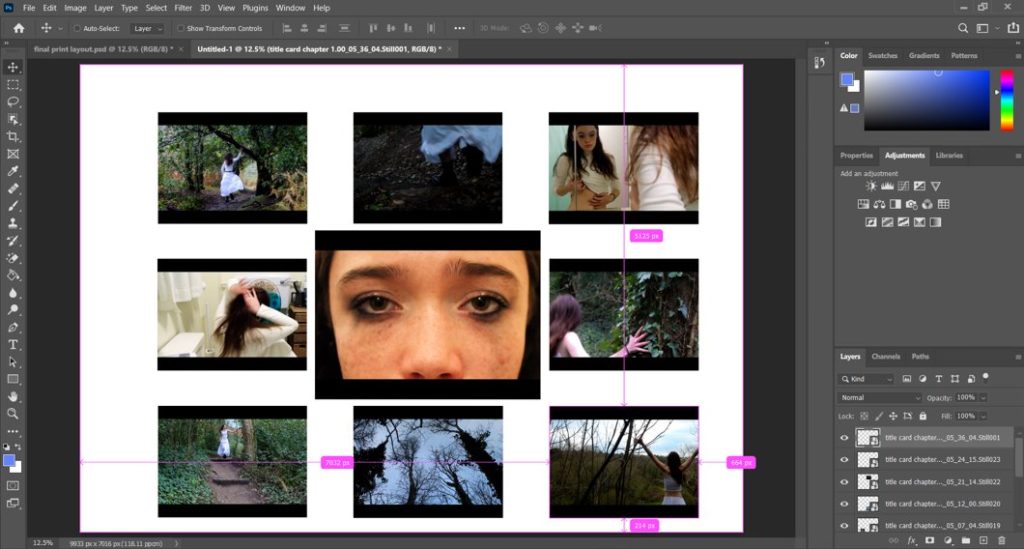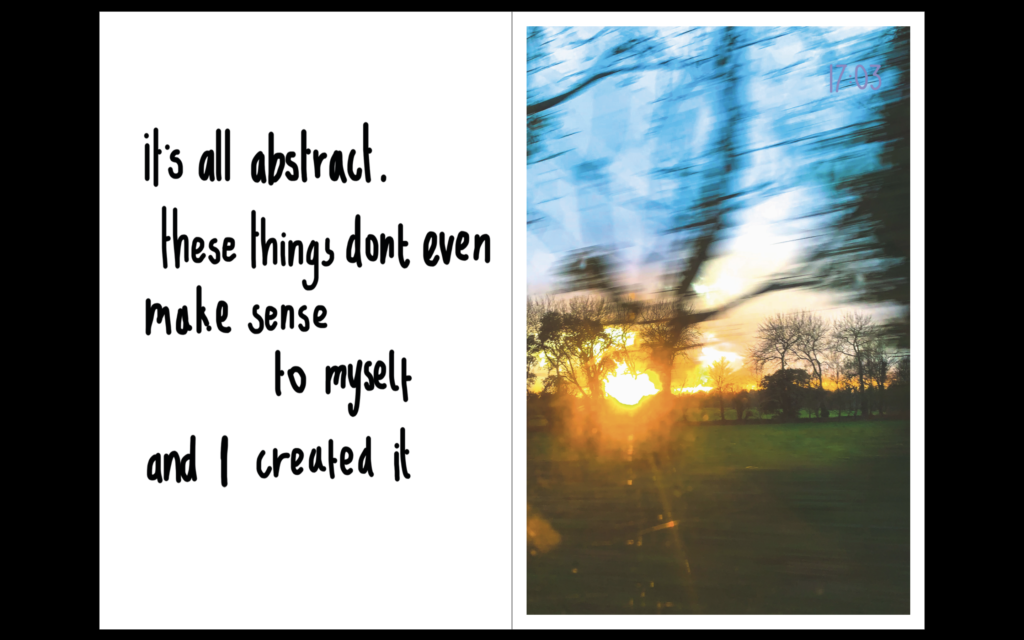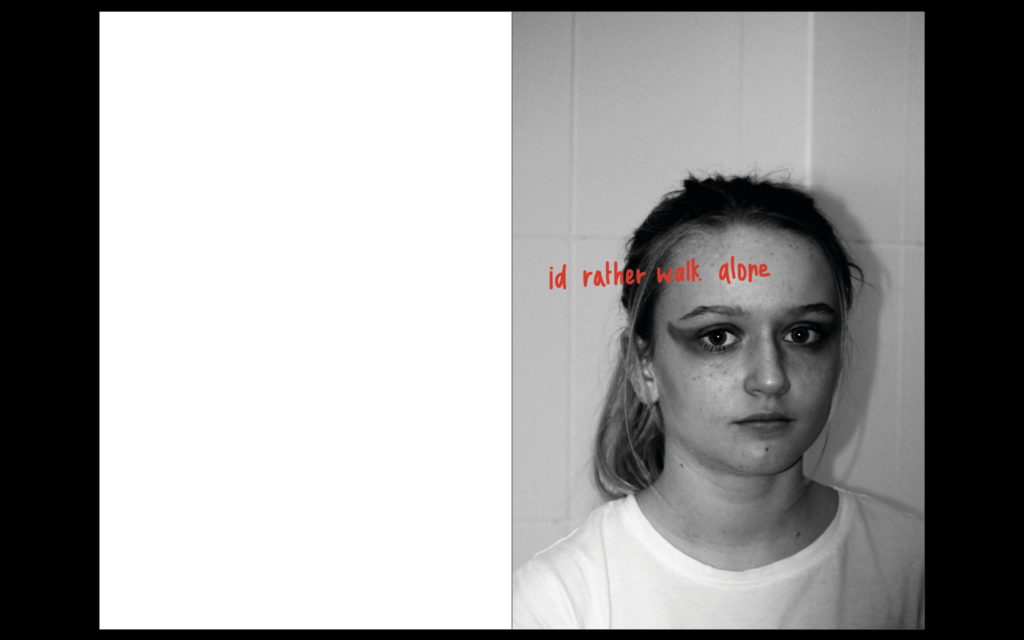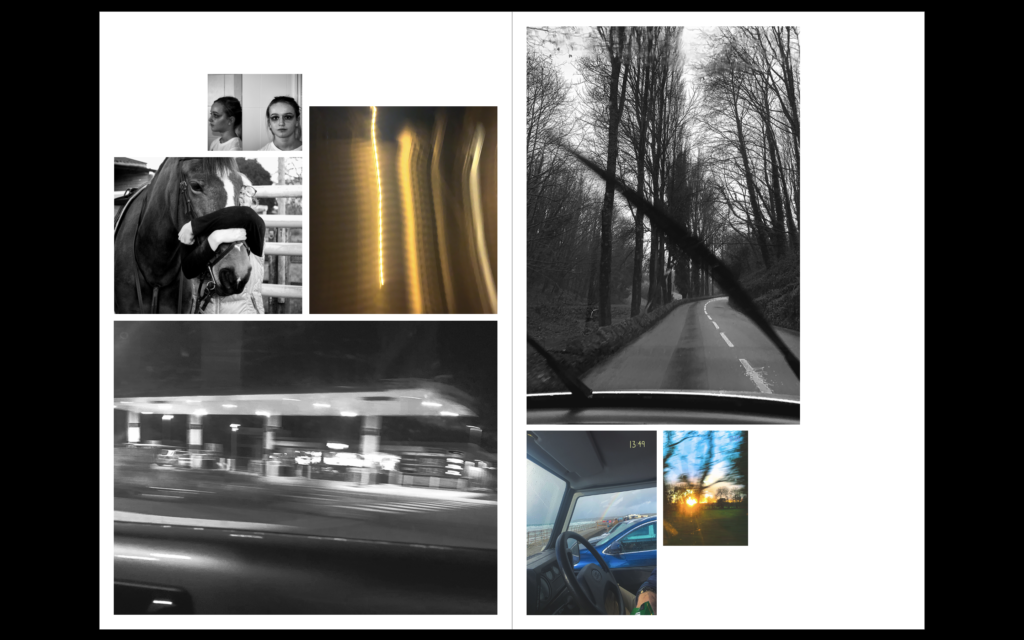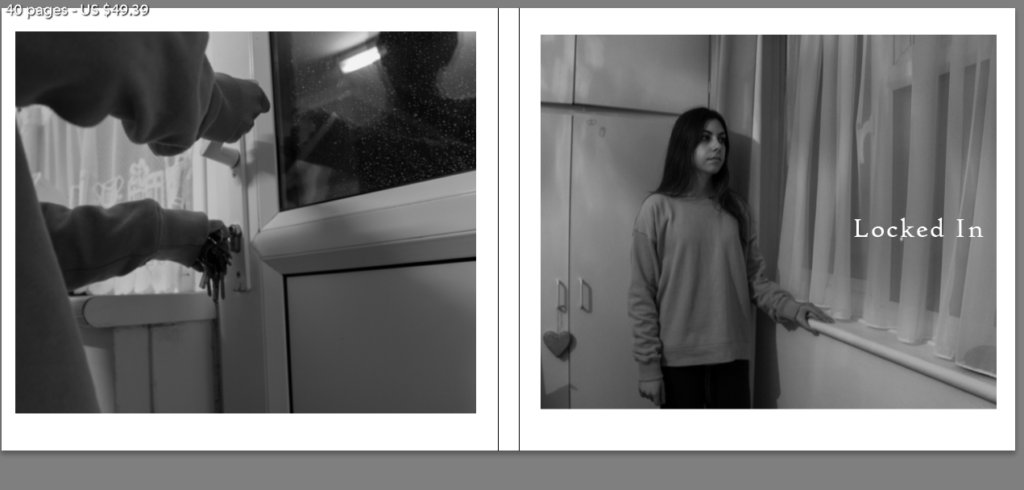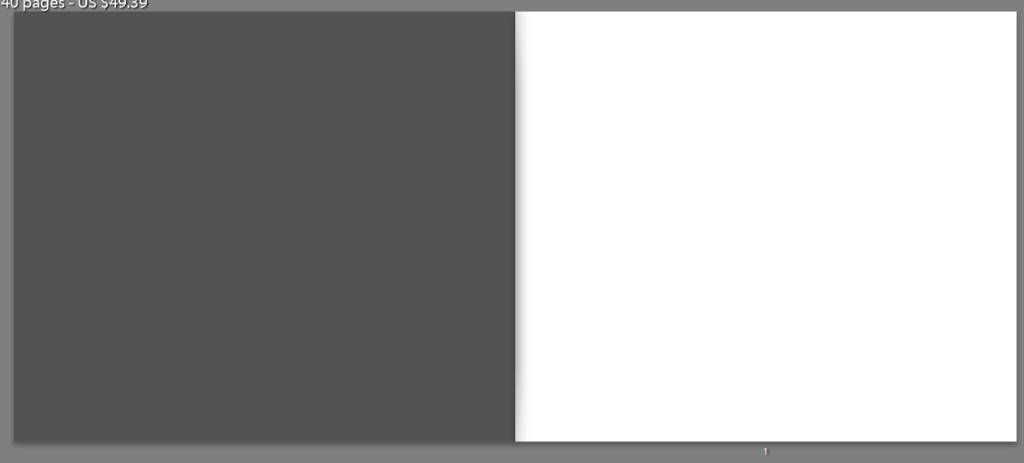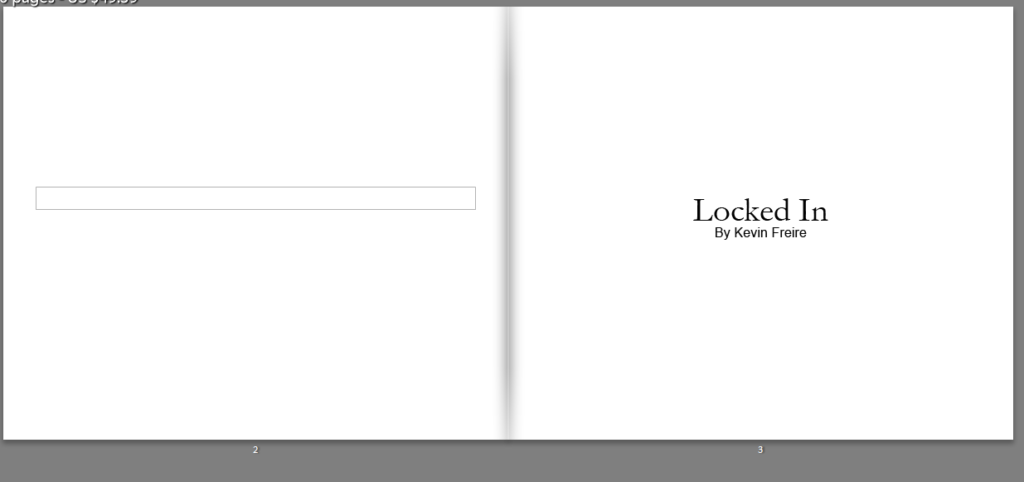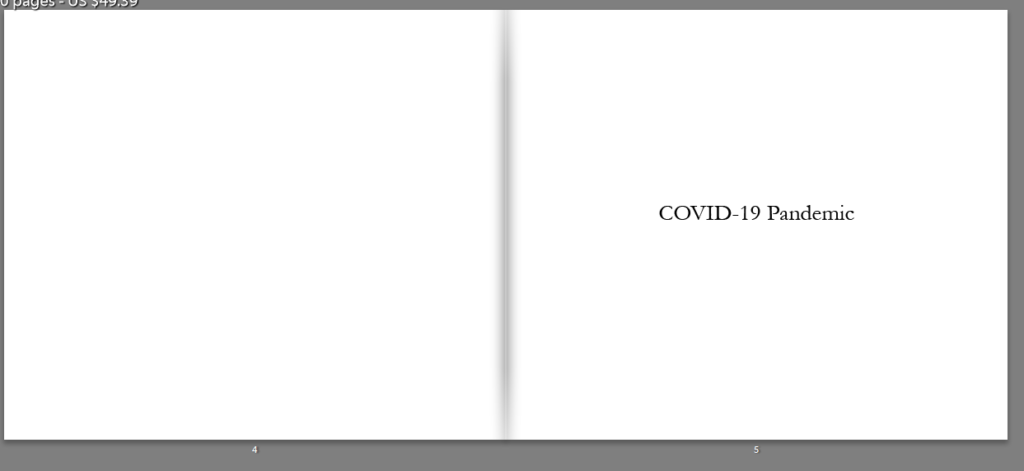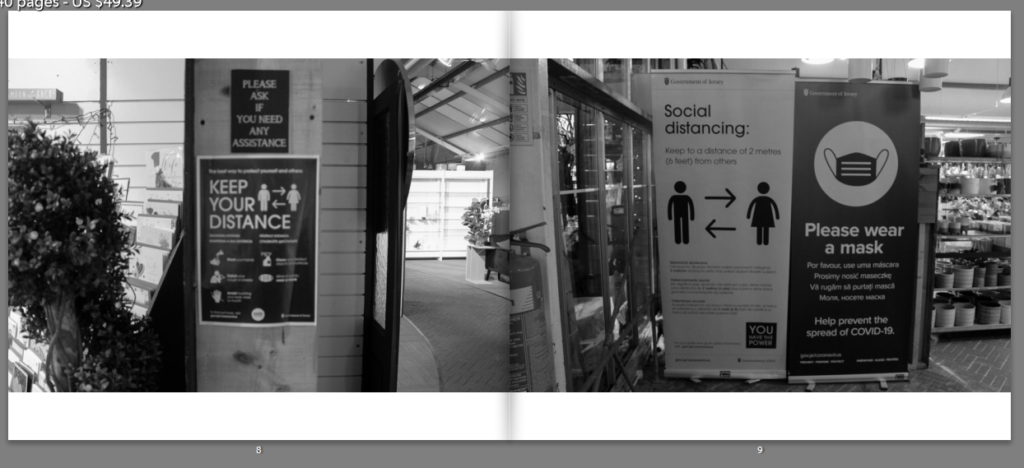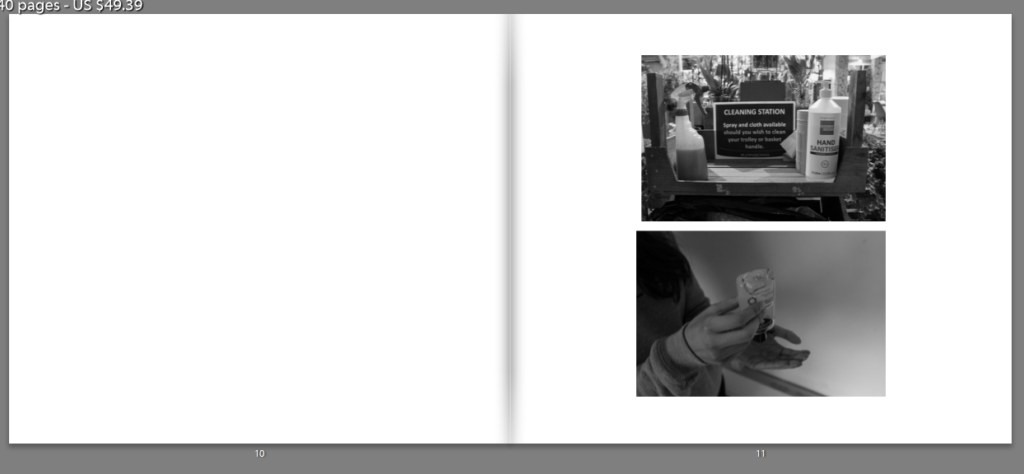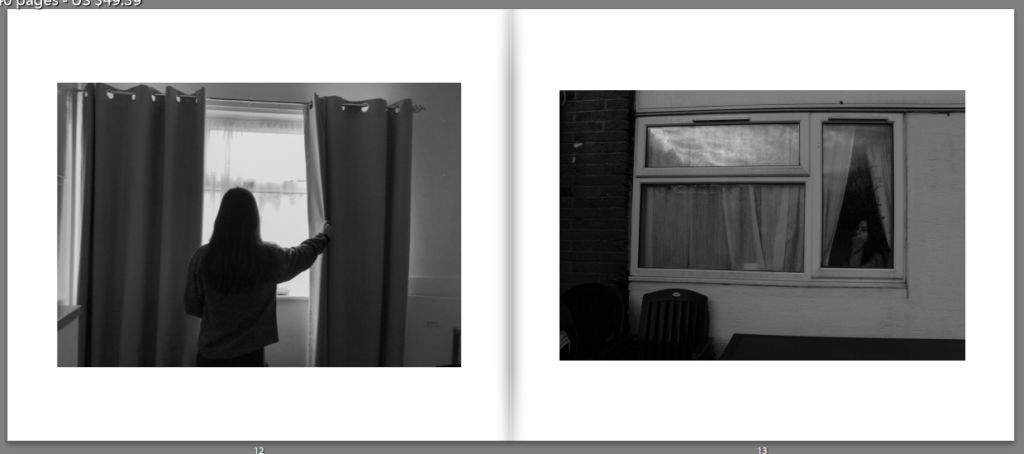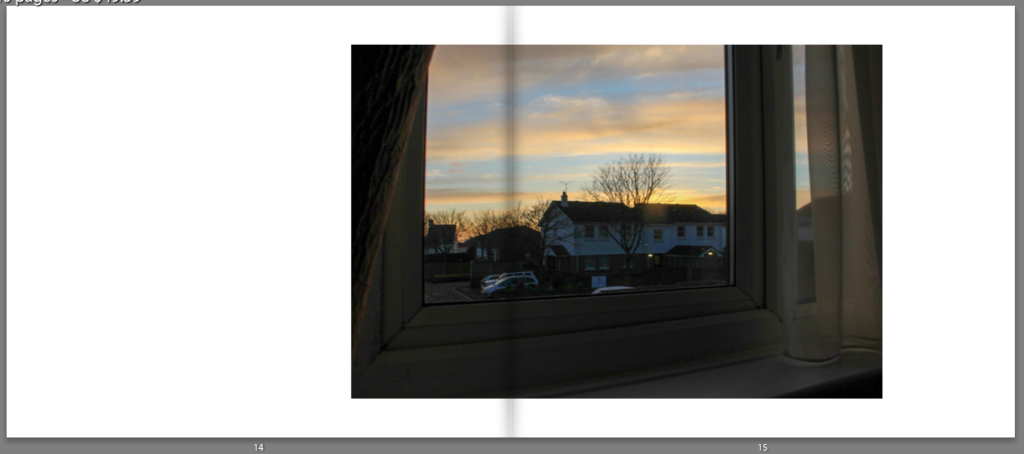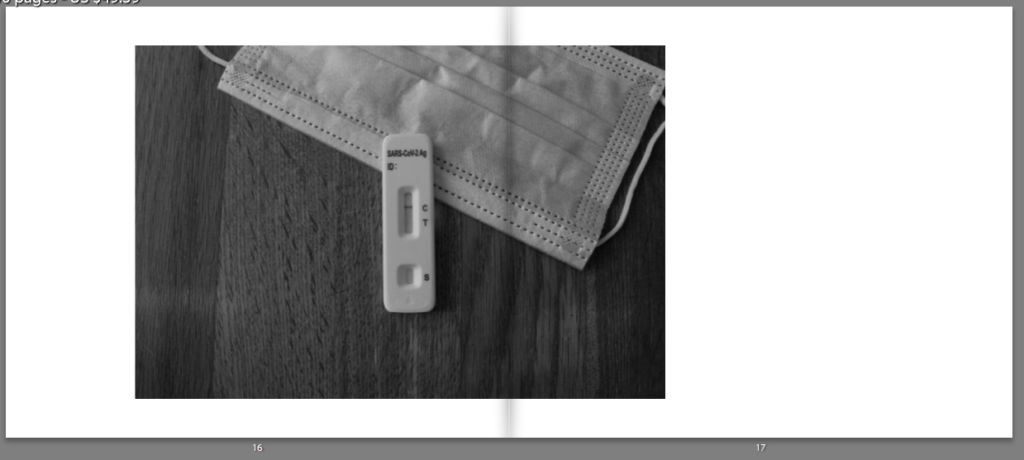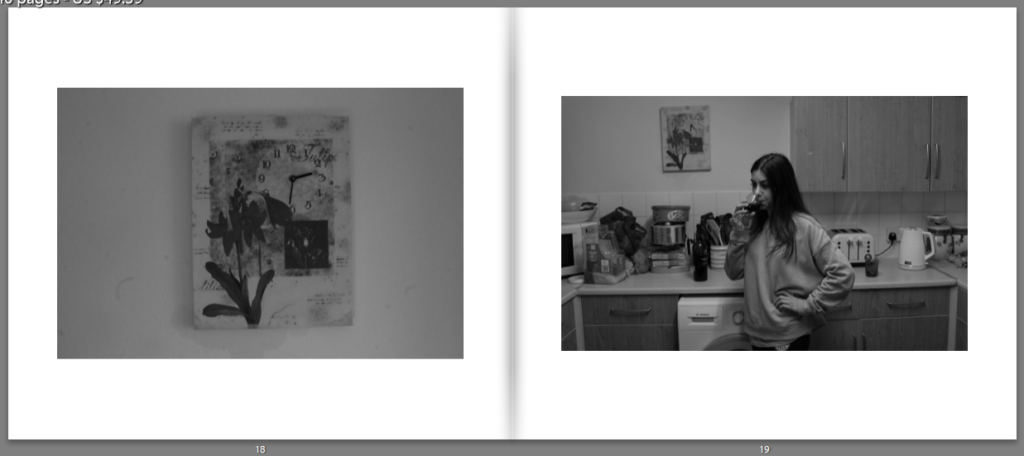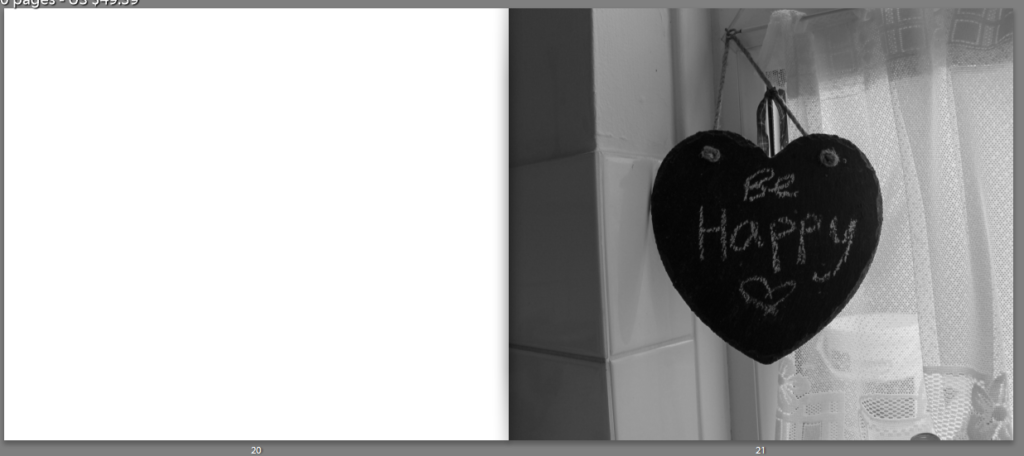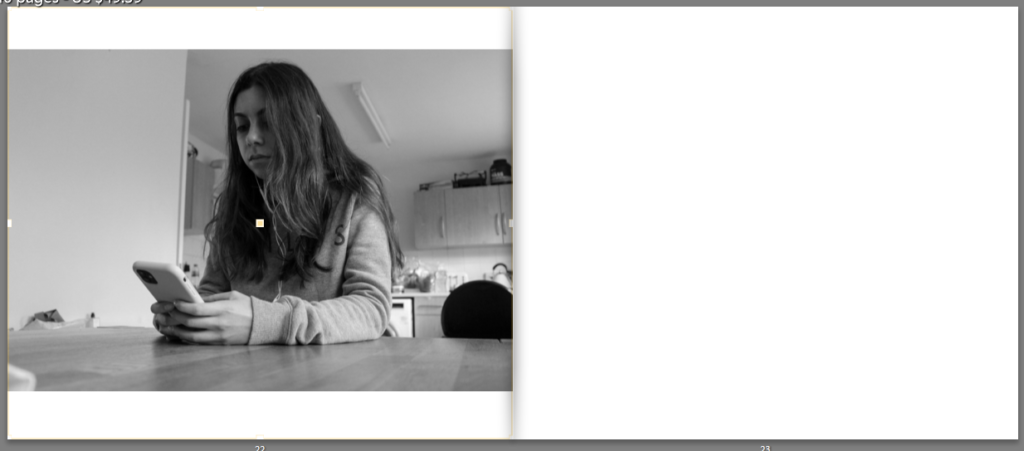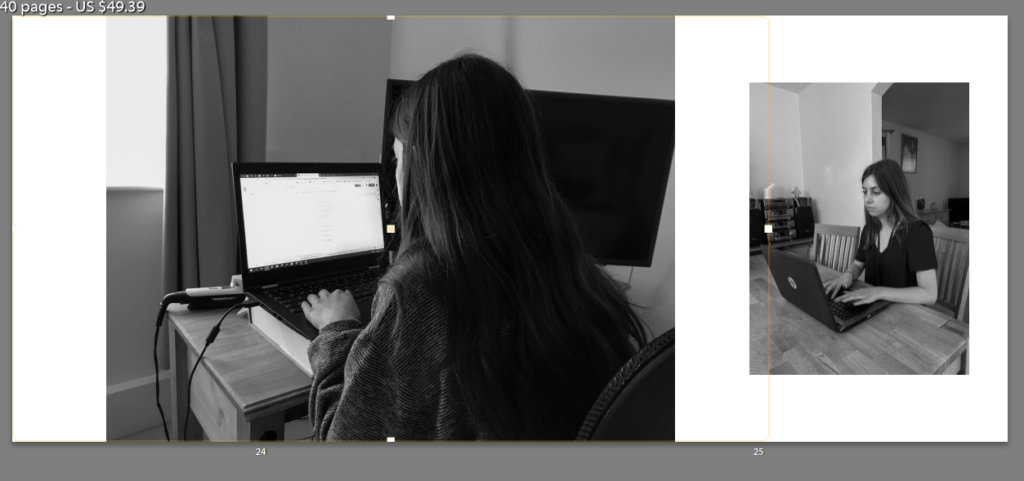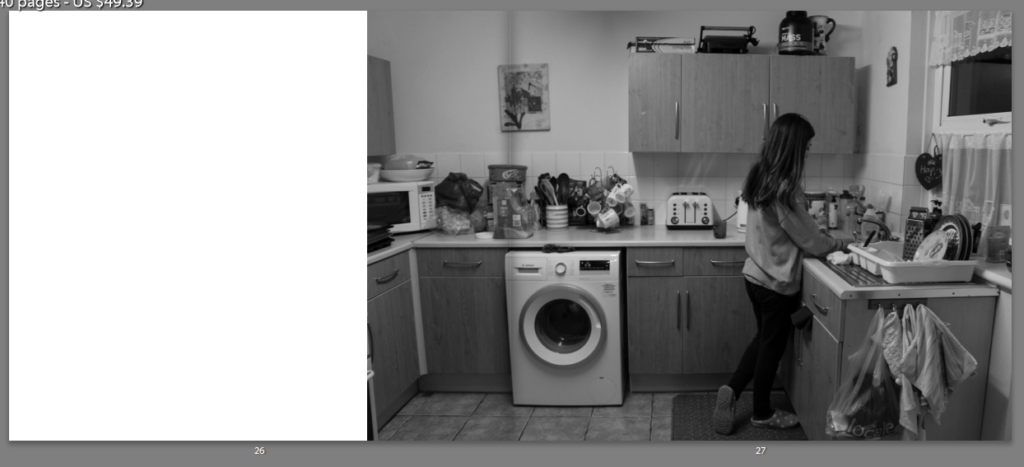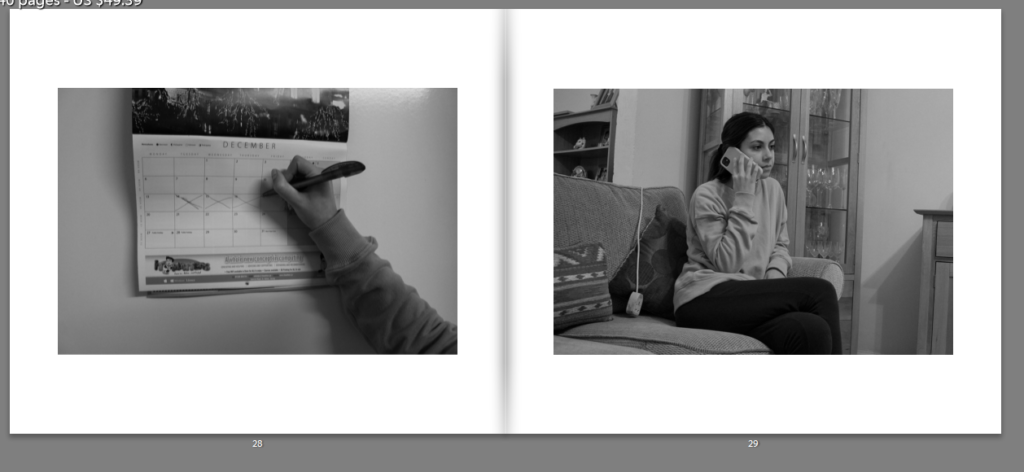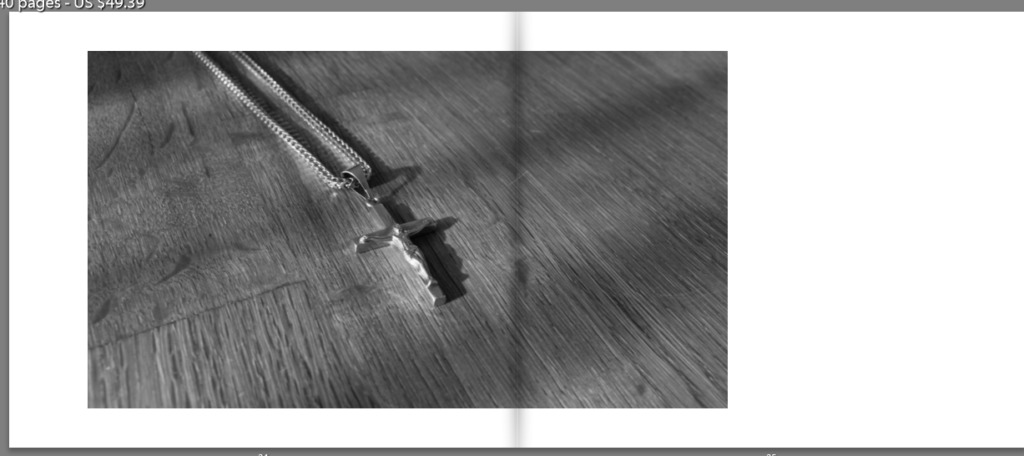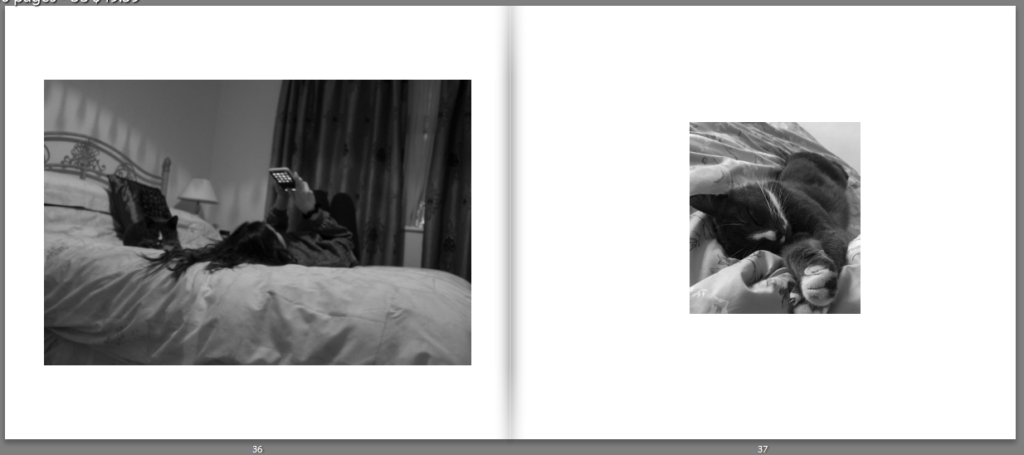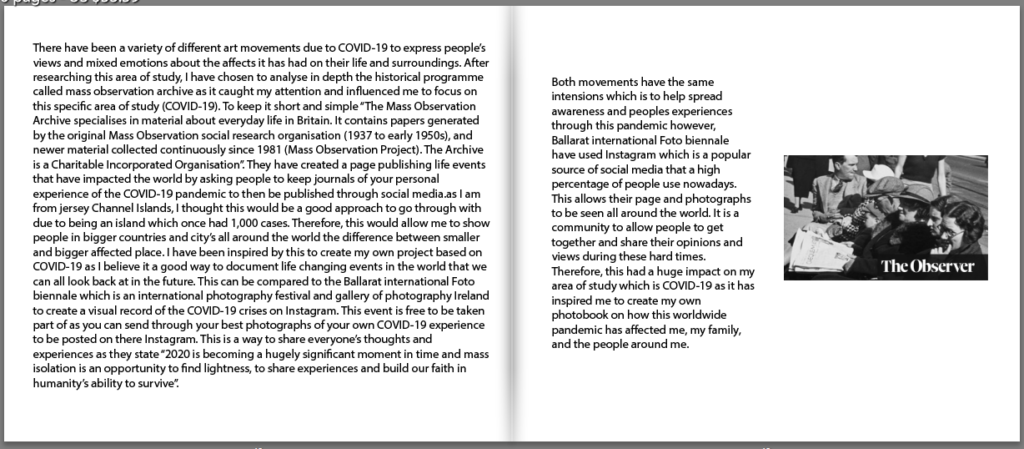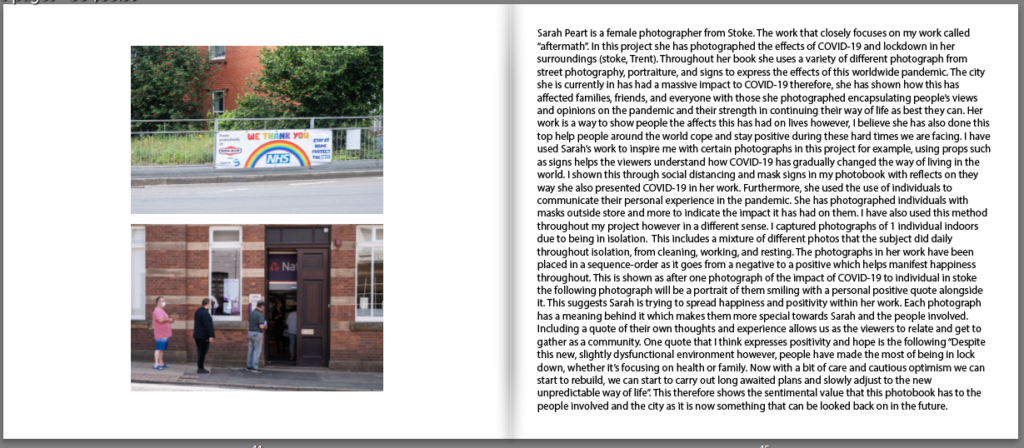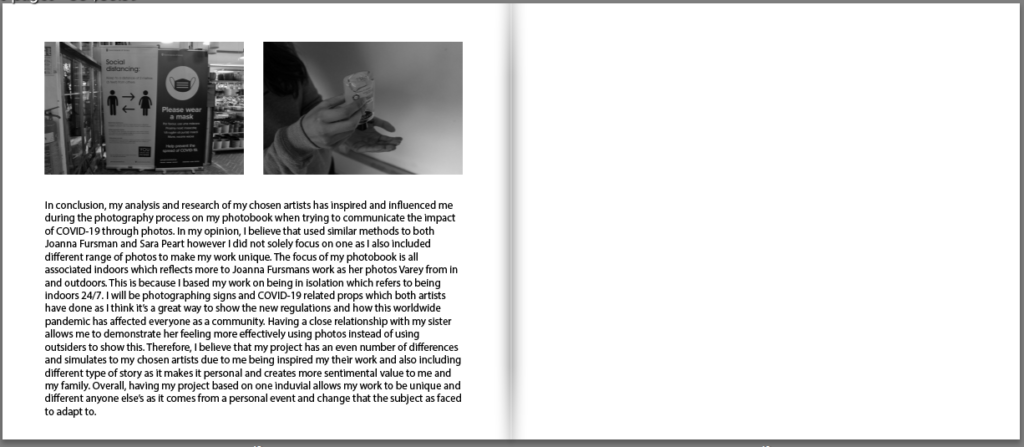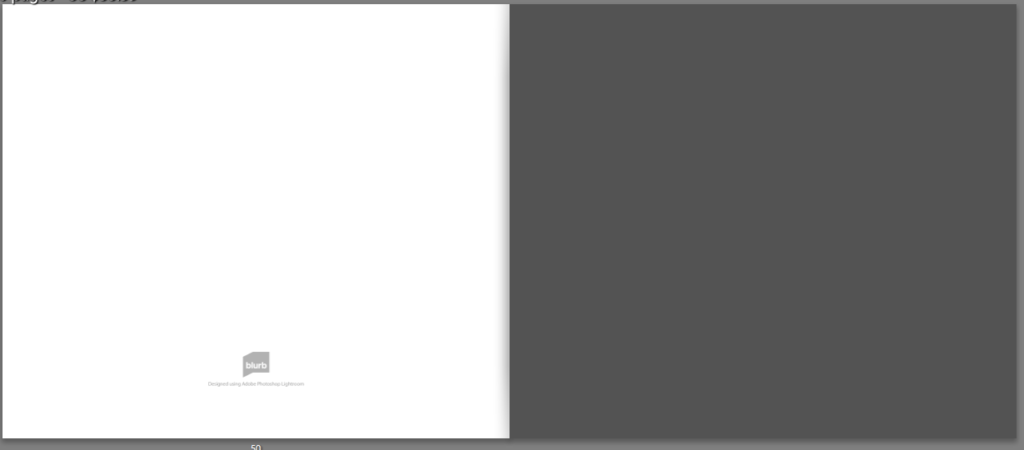FULL-BLEED:
Similarly to my photobook, I chose this image as a full-bleed spread as It’s highly ambiguous. The image doesn’t reveal any one identity but represents the actions and shared experience of much of the modern youth- D.I.Y haircuts and a lack of concern for ones appearance, as they continue to develop their identities and experiment with different experiences.
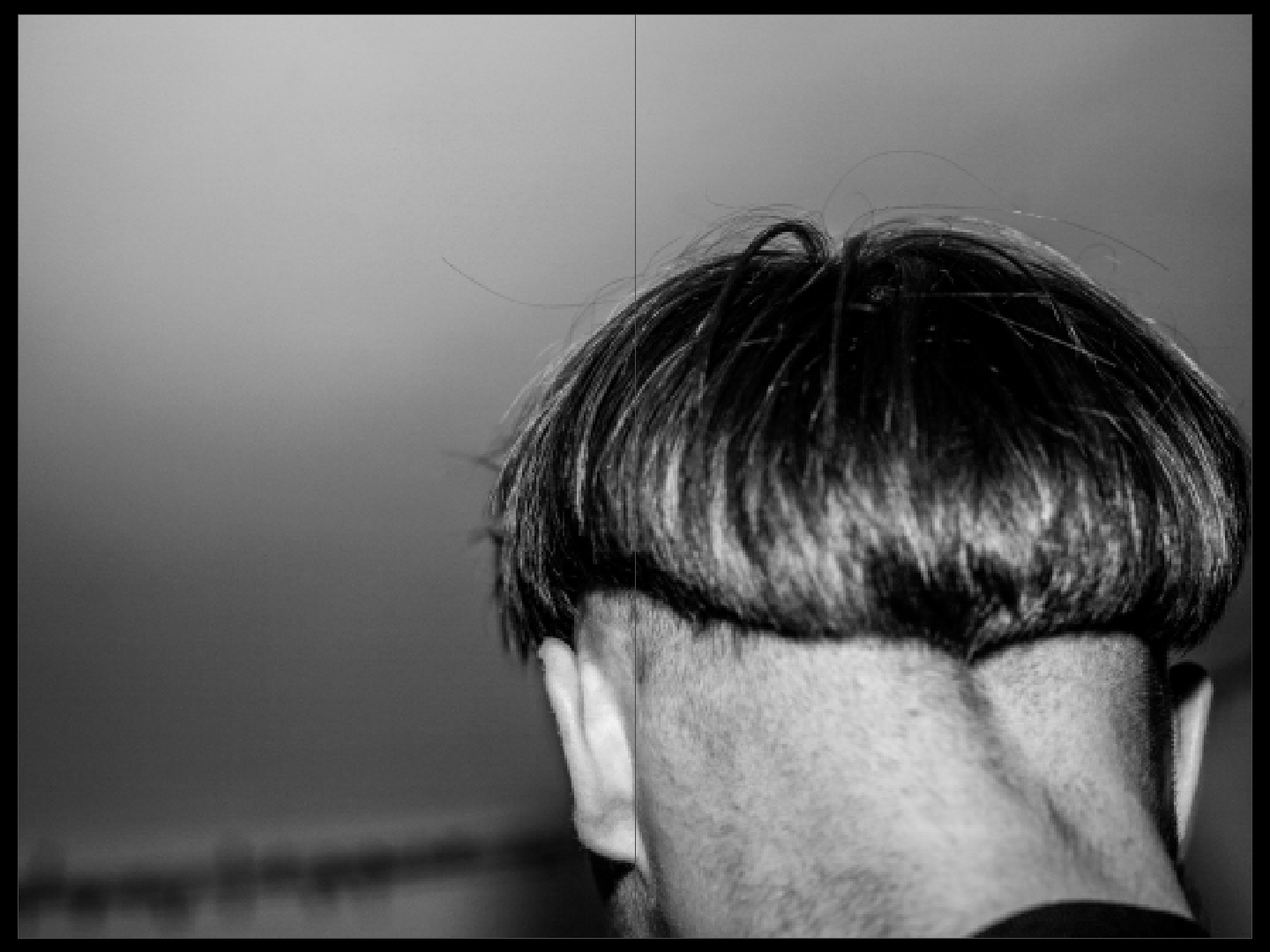
JUXTAPOSITION:
Using another pair of images from my photobook, I juxtaposed an abstract image of a staircase alongside an image of my back. The images are both presented in black and white, so as to focus on the structure and form of the photos. The regularity and structured nature of the stairwell mirrors that of the bone structure and anatomy of the human body. This is a strong juxtaposition as, despite the different experiences we go through as people, we’re all connected via our function- just as the function of a stairwell is the same no matter how it is designed or where it is located.
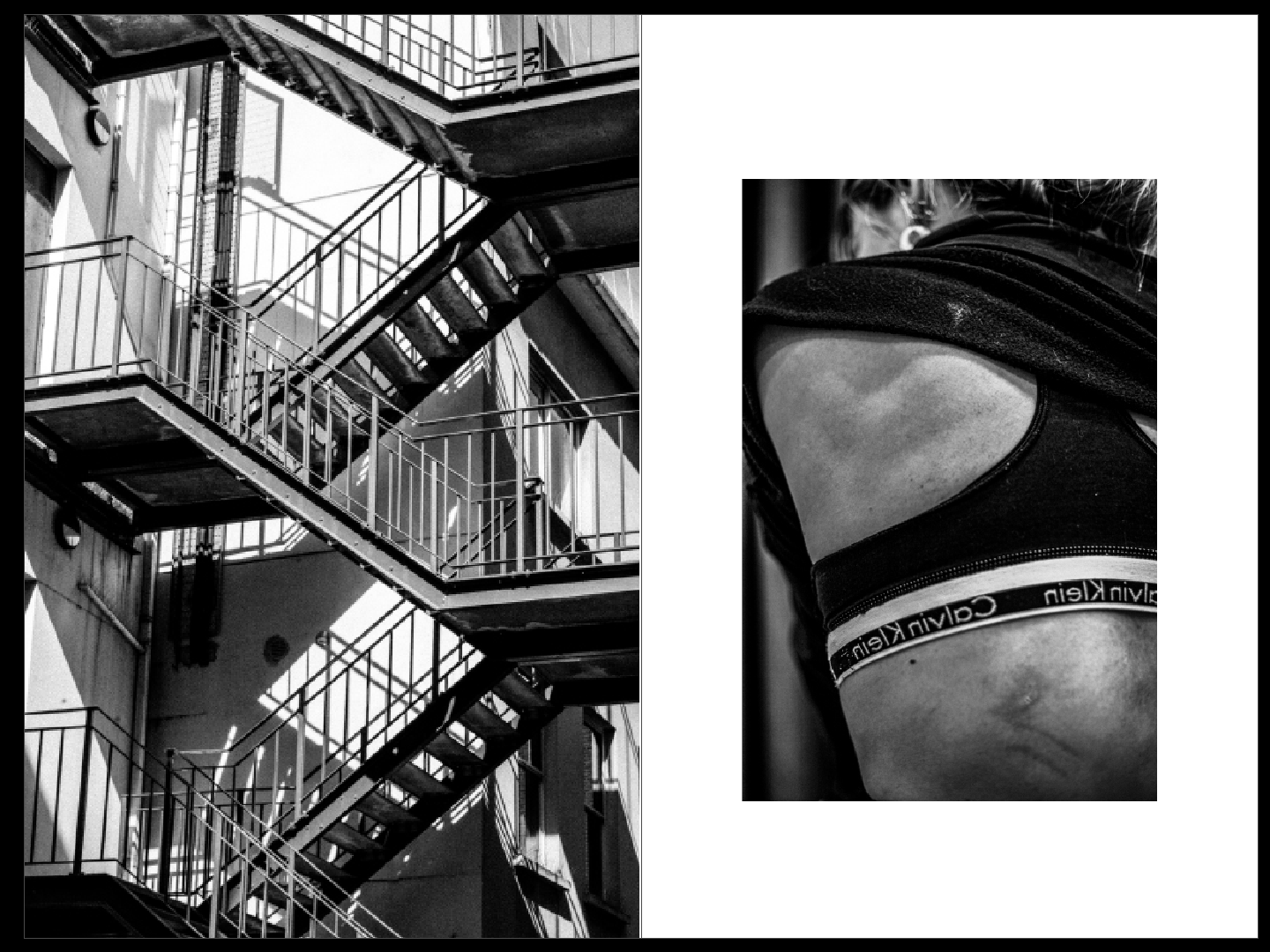
SEQUENCE:
My initial inspiration for my sequence piece was from the nine images from Tracy Moffatt‘s ‘Something more’. The sequence tells a somewhat ambiguous story of a young woman who, from the title of the piece, is searching for something more- bringing in themes of lost innocence and the sense that this woman has outgrown the security and comfort within her life.
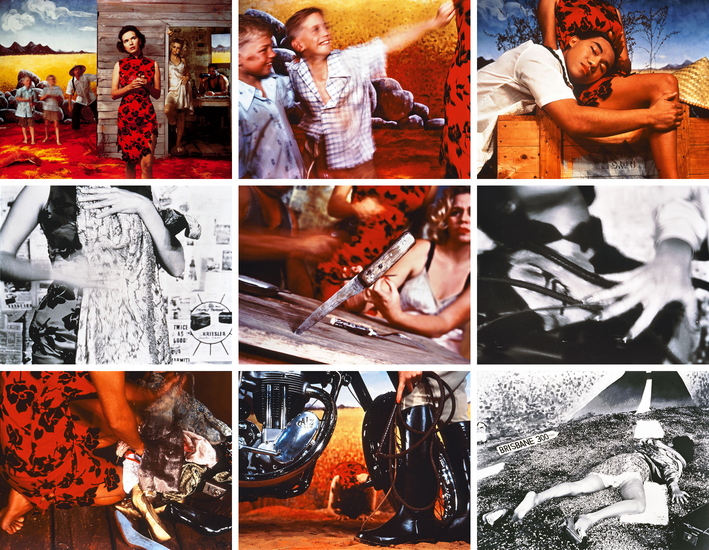
The set of images are highly theatrical. Each of these ‘scenes’ can be displayed in pairs, threes, rows or in a grid to manipulate the storyline. There is a clear arc, however, from naïve country girl to fallen woman abandoned on the roadside no matter how the images are arranged.
Moffatt piece focuses on the device of montage, mixing together a continuous narrative, flashbacks, cutaways, close-ups and memory or dream sequences, to structure the series.
My response:
For this particular sequence I used a mixture of high clarity images and low shutter speed images. The images with clarity were placed in black and white to amplify the objectivity of them. In contrast to this, the images showing bright colours and fast movement allowed for a depiction of altered states, if not caused by then at least related to the images with high detail.
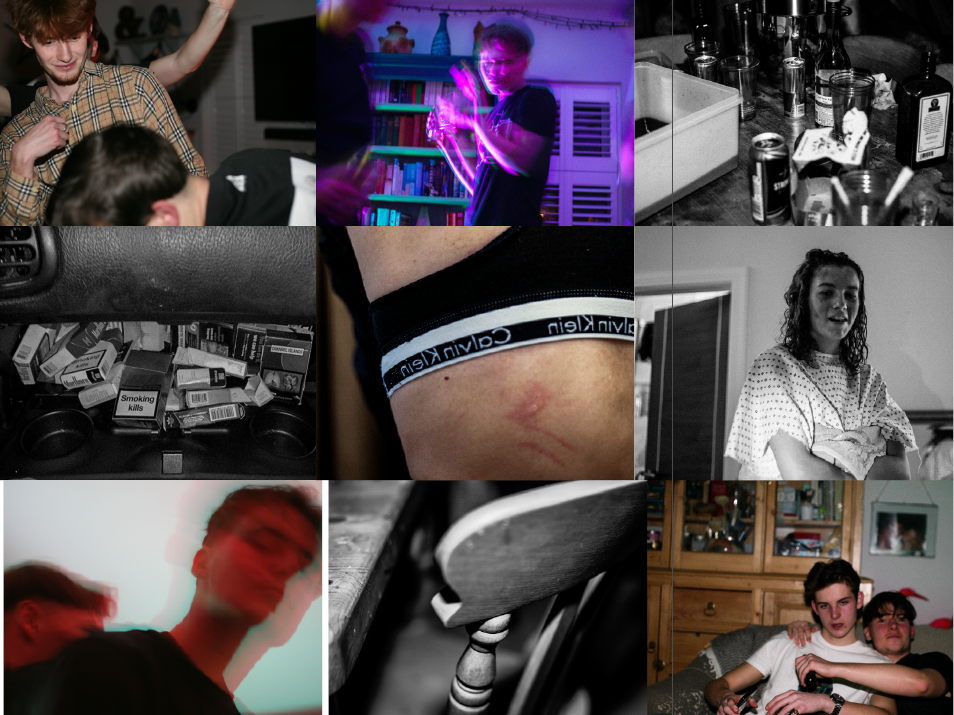
MONTAGE:
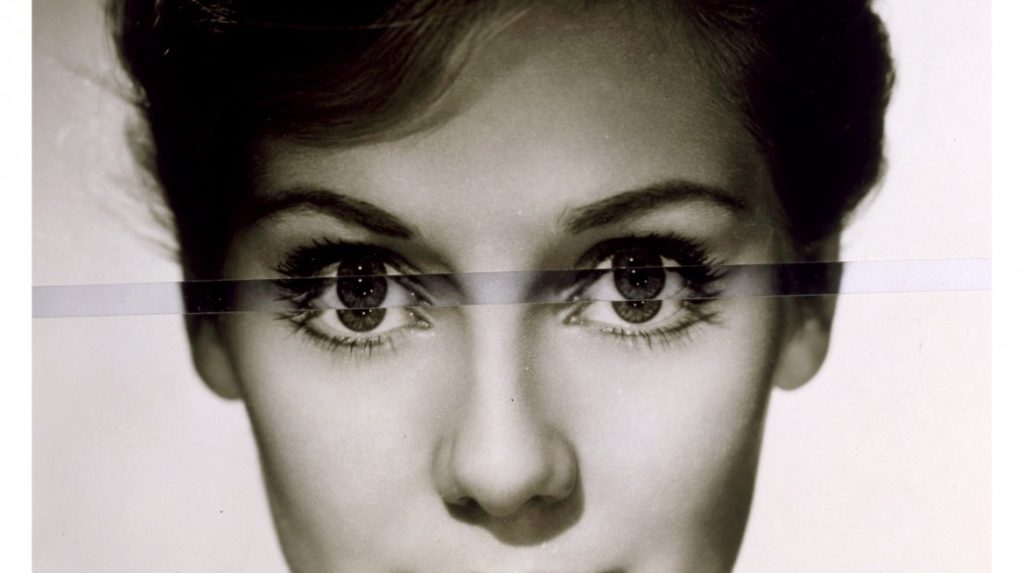
Finally, to create my montaged images, I focused on John Stezaker, a British artist who is fascinated by the lure of images. Stezaker’s work is produced by taking classic movie stills, vintage postcards and book illustrations and making collages to give old images a new meaning.
The different adjustments (inverting and slicing) of these separate pictures together allows Stezaker to explore the subversive potential of found images.
My Response:
To carry through this depiction of altered states, I took a formal portrait I created and placed it on multiple layers in photo-shop. Having done this, I cropped the eyes of the layered images and placed them unevenly above or below the eyes of the original photo. This allowed me to create a portrait depicted the possible feeling of being in an altered state, to which the audience can take inference from.
Additionally, I superimposed a pack of paracetamol (commonly mixed or overdosed with) on top of the same formal portrait. Like previously, this removed the identity of my subject and resulted in an image that represents the social issue of drug use throughout the modern youth.

